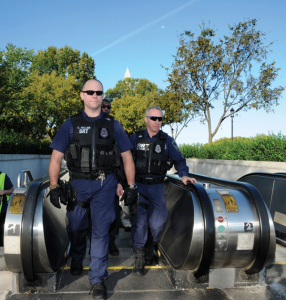Building a Robust Safety Culture
 Metro’s Board took the lead in building a safety-first culture by establishing the Safety and Security Committee. Metro has also adopted an analytical approach to prevent incidents by employing smart technology and identifying hazards early. All of Metro’s efforts to improve safety since 2010, including increased communication and analysis, have been recognized by the Federal Transit Administration (FTA) and the National Transportation Safety Board (NTSB).
Metro’s Board took the lead in building a safety-first culture by establishing the Safety and Security Committee. Metro has also adopted an analytical approach to prevent incidents by employing smart technology and identifying hazards early. All of Metro’s efforts to improve safety since 2010, including increased communication and analysis, have been recognized by the Federal Transit Administration (FTA) and the National Transportation Safety Board (NTSB).
The actions over the last two years include:
- Deploying safety officers and Metro Transit Police geographically based on hazard reporting, analysis of crime statistics and identified “hot spots”;
- Installing hundreds of security cameras and video technology on buses, to decrease the occurrence of incidents and improve alertness;
- Closing all ten recommendations of the FTA’s State Safety Oversight Audit;
- Completing six internal safety audits, making Metro current with the three-year cycle required by the System Safety Program Plan;
- Continuing to develop the confidential close-call reporting system;
- Developing a Fatigue Risk Management System, a Fatigue Executive Steering Committee, and hours of service maximums to effectively address fatigue throughout the Authority; and
- Closing seven NTSB recommendations, submitting fourteen for closure, and continuing progress on six.
For more information:
Download both the full Momentum plan and the Executive Summary.
Regional support is important to making Momentum a reality! A number of regional stakeholders have already endorsed Momentum. Please sign on and add your name to endorse Momentum and send the message that public transit is vital to the National Capital Region.


From 2009: “Officials have also discovered that sometimes the intercoms used by customers to communicate with the train operators also do not always function, and officials are seeking to identify a fix to that situation.”
@WMATA Rider
Oh, don’t be silly – they’ve only had “efforts to improve safety” since 2010!
I, too, found the posting of this article and Metro’s revelation slightly humorous. I also find it humorous about “Deploying safety officers and Metro Transit Police geographically based on hazard reporting, analysis of crime statistics and identified ‘hot spots'”, since I never seem to see officers at what appears to be problematic areas during rush hour with any consistency.